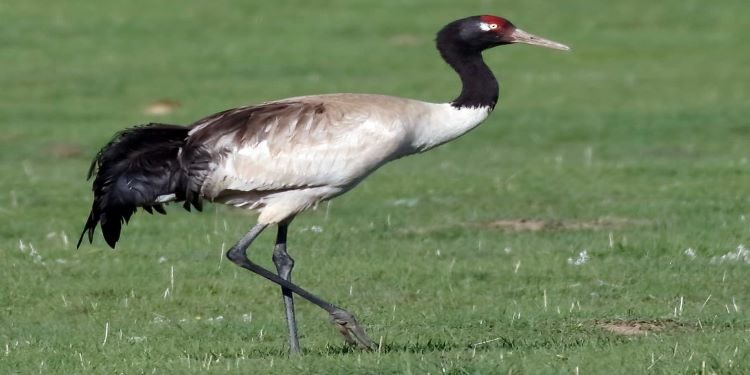In news : Recently, the rare Black-Necked Crane visited Assam for the first time
About Black-Necked Crane
- It is a medium-sized crane in Asia that breeds on the Tibetan Plateau and remote parts of India and Bhutan
- Scientific name: Grus nigricollis
- Appearance: The upper long neck, head, primary and secondary flight feathers and tail are completely black and body plumage is pale gray/whitish. A conspicuous red crown adorns the head. The bill is greenish and the legs and feet are black.
- It is also found in China
- It is is the state bird of union territory of Jammu and Kashmir
Habitat:
- The high altitude wetlands in the Tibetan plateau are the main breeding ground of the species.
- These birds winter at lower altitudes where they feed mainly on the leftovers in rice and potato fields.
- The black-necked crane summers mainly in the high altitude Tibetan Plateau. The breeding areas are alpine meadows, lakeside and riverine marshes and river valleys.
Conservation:
- IUCN:In 2020, a re-assessment of the crane’s population led its status to change from Vulnerable to Near Threatened on the IUCN Red List.
- Listed in Schedule I of Wildlife (Protection) Act 1972
- These birds are legally protected in China, India and Bhutan
- It is listed on Appendix I of CITES.
Major threats
- The major threat to the successful breeding of black-necked crane is the damage to the eggs and chicks, caused by feral dogs.
- Another threat to the bird is the loss of habitat.
Its association with Buddhism
Often associated with peace, the Black-necked crane is central to Buddhist mythology and culture. According to a World Wide Fund for Nature (WWF) blogpost, legend says “previous incarnations of the Dalai Lama were carried from monastery to monastery on the backs of these holy birds.”
















